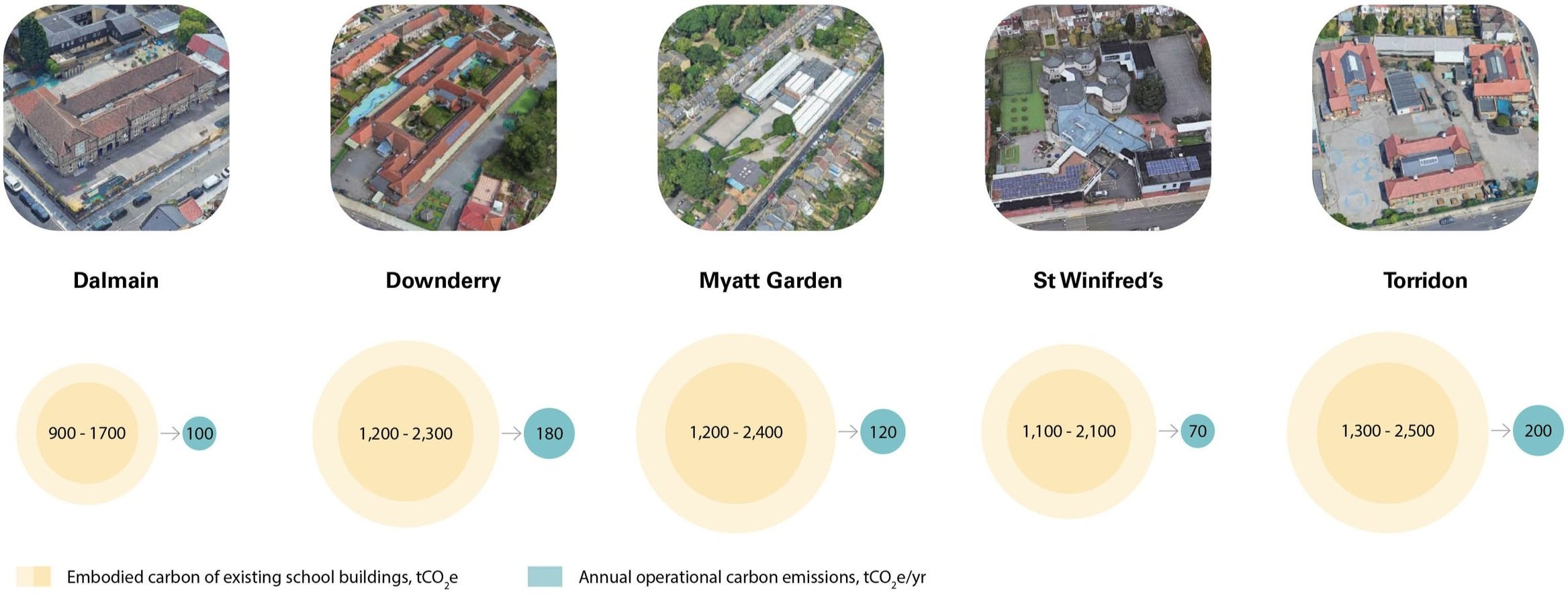Whole life carbon study of school retrofit for Lewisham Council and the Department for Education
RAFT, in collaboration with the Department for Education (DfE) and the London Borough of Lewisham (LBL), have published a report on the whole life carbon of schools. It compares the carbon emissions of retrofitting our schools with the emissions of demolition and rebuild
We are facing a climate emergency. Reducing energy demand and carbon emissions from our poorly performing buildings is key to meeting the UK’s climate targets. There are 30,000 existing schools in the UK, all of which need to reduce their annual emissions. Should they be demolished and replaced with energy efficient schools? Or should they be retrofitted and how deep should that retrofit go?
RAFT analysed five existing primary schools in Lewisham, London. We calculated the whole life carbon emissions of five different scenarios for each of these schools:
Do nothing
Replace gas boilers with air source heat pumps immediately
Carry out a phased retrofit comprising insulation and other improvements as well as replacing gas boilers with air source heat pumps
Demolish the school and replace with new buildings that meet UK building regulations
Demolish the school and replace with new buildings that are highly energy efficient and have low embodied carbon
We found that phased retrofit was the best scenario in terms of whole life carbon.
It also performs well on other issues such as upfront costs, running costs, health and energy security.
Time is critical – in particular the next ten years – with early installation of low-carbon heating systems being especially important.
Retrofit elements with the highest embodied carbon are PV, windows and – if heat loads are high - heating systems.
In addition to the key findings noted above, the report delves into the detail of how best to minimise the whole life carbon emissions of building retrofit:
Insulate and improve buildings to reduce their heat loads prior to replacing heating systems.
Why? The embodied carbon (EC) of large air source heat pumps and new radiators can outweigh the EC of all the other retrofit measures excepting PV. Also, if you don’t reduce heat loads you’ll suffer from higher energy bills, higher electrical infrastructure and heating system costs and lower energy security.Specify air source heat pumps with refrigerants with low global warming potential.
Why? The EC of refrigerants is significant and can vary by several orders of magnitude.When installing PV, choose panels with a low embodied carbon.
Why? PV has the highest EC of all the retrofit measures by far and the EC of different manufacturers varies widely.Only replace windows if they’re at end of life or single glazed.
Why? Windows have high EC and the carbon payback periods are very long if the new windows are not substantially better performing than the old ones.Avoid aluminium framed windows.
Why? Aluminium framed windows have 4-6 times the EC of timber, alu-clad timber or UPVC frames.Avoid single-glazed windows but choose between double and triple to suit requirements such as comfort, budget, security, heritage and acoustics.
Why? Double and triple glazing have similar whole life carbon emissions.Be aware that achieving low whole life carbon emissions and achieving operational zero carbon are not the same thing.




